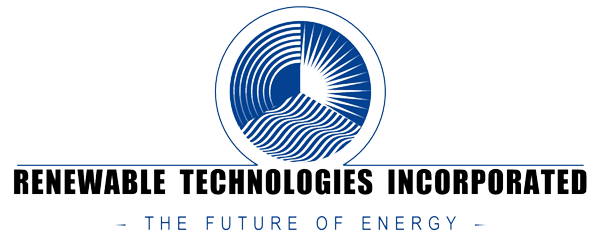Did you know that solar power has been around for centuries? The very first use of solar energy was harnessed by a simple magnifying glass…but the sophistication for solar power has grown significantly since the 7th century B.C. In more recent history, solar power has been used to generate electricity. It is a clean, renewable source of energy that could help reduce our reliance on fossil fuels. But is investing in solar power worth it? Let’s take a closer look at this renewable resource and find out!
First Uses of Solar Energy
While Native Hawaiians, Alaska Natives, and Native Americans have been using the power of controlled burns to manage land, hunt, cultivate crops, and travel for more than 13,000 years, it wasn’t until the 7th century that humans began to use magnifying glass materials and sunlight to light fires. Over the next 4,000 years, the Greeks and Romans cultivated solar energy to the degree that it was used to light their torches by way of mirrors to concentrate the solar radiation. Starting in 20 A.D, China came onto the scene with written record of the same means of igniting a flame.
Next in the annals of history came the development of a “sunroom,” or a room full of windows designed to concentrate and direct solar energy. These sunrooms existed in ancient Roman bathhouses thousands of years ago, and remain a popular concept among contractors and architects today.
Since their height in the 1200s A.D, Pueblo Native American ancestors—also called the Anasazi—used south-facing dwellings in cliffs to capture the thermal energy of the sun, even during the cold months.
By the 1700s, solar power had captured the interest of scientists and researchers keen on refining the practice of harnessing the sun’s energy and further capitalizing on it—beyond radiant warmth and lighting fires. In fact, in the summer of 1897, an inventor by the name of Frank Shuman created a solar engine capable of powering a steam engine. Excited by this development, he was quoted in 1916 describing how “we have proved the commercial profit of sun power…[and] that after our stores of oil and coal are exhausted the human race can receive unlimited power from the rays of the sun.”
A Brief History of the Development of Modern Solar Power
When most people think of solar power, they think of photovoltaic panels. Photovoltaic systems are some of the most abundant ways we collect solar energy today—but coming up with the modern photovoltaic panel took contributions from many different researchers and scientists over the years.
Some credit the discovery of the beginnings of modern solar technology with French scientist Edmond Becquerel, who found that when two metal electrodes were submerged in a conductive solution, exposure to sunlight could generate electricity. This was in 1839, well before the invention of the solar powered steam engine. Becquerel coined this phenomenon the “photovoltaic effect,” which was later adapted to include the element selenium by Willoughby Smith in 1873.
Smith found that selenium had tremendous photoconductive potential and, with his collaborator Richard Evans Day, they found that electricity could actually be produced by exposing selenium to sunlight. By this time, it was 1876.
It wasn’t until 1883 that the first selenium wafer solar cells were created by Charles Fritts—which is why some credit him as the father of modern solar panels. Today, however, solar panels are composed of silicon, not selenium—an advancement that was brought forth by Calvin Fuller, Gerald Pearson, and Daryl Chapin at Bell Labs in 1954. This is why yet others credit Fuller, Pearson, and Chapin with the “discovery” of modern solar panels—though what they produced in the ‘50s operated at less than a quarter of the efficiency of modern solar panels, hovering around 4%.
First Applications of Modern Solar Power
Since humans first began harnessing the power of the sun to manage their crops and fields, hunt game, design their homes and bathhouses, and light their torches, we’ve only grown increasingly ambitious with what we can power using the abundant free resource of the sun. The course of solar power’s history has been written with the coming of many “firsts” in an ever increasing line of solar-fueled projects—not least of which, recently, is a completely solar powered automobile. In the following section, we will detail some of the hallmark moments for solar power throughout history.
Space
After the discovery of the photoconductivity of silicon in the 1950s, the Vanguard I satellite relied on a solar-powered one-watt panel to send radio transmissions. This was the first of many times solar panels would be used to power endeavors beyond earth’s atmosphere. In 1964, NASA launched a satellite exclusively run on its solar panels with a 470 watt capacity. Just two years after this, they launched another project powered by solar, the Orbiting Astronomical Observatory.
Construction and Manufacturing
The University of Delaware became the first institution to build integrated photovoltaic systems into the rooftop of the world’s first solar building, named “Solar One.” This notable structure was built in 1973 and relied on both photovoltaics and solar thermal energy to power the building.
By 1981, Paul MacCready made history when he built the first airplane ever to run exclusively on solar power and flew it from France to the United Kingdom across the English Channel. By 2001, NASA crafted a non-rocked aircraft capable of reaching 96,000 feet in elevation using solar power alone; and by 2016, pilot Bertrand Piccard flew across the globe in the first ever zero-emissions flight. His plane, named “Solar Impulse 2,” remains the most efficient and complex solar-powered airplane in the modern day.
Presidential Acknowledgement
Traditionalists may not be a fan of solar power, but that didn’t stop President Jimmy Carter from installing solar panels on the White House in 1979. Though President Ronald Reagan ordered these to be removed in 1981, President Barack Obama had a solar water heater and solar panels re-installed on the Whitehouse in 2010.
Will Solar Power Save Me Money?
Since the birth of the modern model for solar panels in the 1950s, scientists and researchers have come a long way—not only with improving efficiency of solar panels, but also in lowering costs as well. Since the completion of the first solar-powered steam engine in 1897, progressive thinkers have used solar energy to power everything from their homes to their factories.
Fortunately, the cost of joining the solar power buzz has dropped significantly over the last 70 odd years. In 1956, solar panels cost a whopping $300 per watt—whereas today, they cost roughly $0.50 per watt. Since the 1980s, the cost of solar panels has dropped roughly 10% with each passing year. With increasing popularity and accessibility, there’s never been a better time to invest in solar energy.
Is Solar Power Worth It?
Of course, change can be hard—and some people balk at the initial cost of investing in a solar panel setup for their home, business, or factory. However, once you consider the ROI or Return On Investment of installing a solar power setup in terms of dramatically lowering—if not altogether eliminating—utility bills, not to mention any tax breaks you are likely to receive due to carbon emission offsets, most people who make the switch never look back.
California’s Best Solar Power Contractor
The price of energy hasn’t decreased in the last four decades—but the price for solar panels sure has! With a long patchwork history thanks to the work of many progressive thinkers, adventurers, and scientists, harnessing solar power has gone from the simplicity of using a magnifying glass to light a spark to the profundity of fully solar-powered airplanes and automobiles…and who knows where it will take us in the future.
Are you looking for the best solar power contractor in California to help you convert to greener (and ultimately cheaper) energy? Contact Renewable Technologies, Inc today for a quote!

